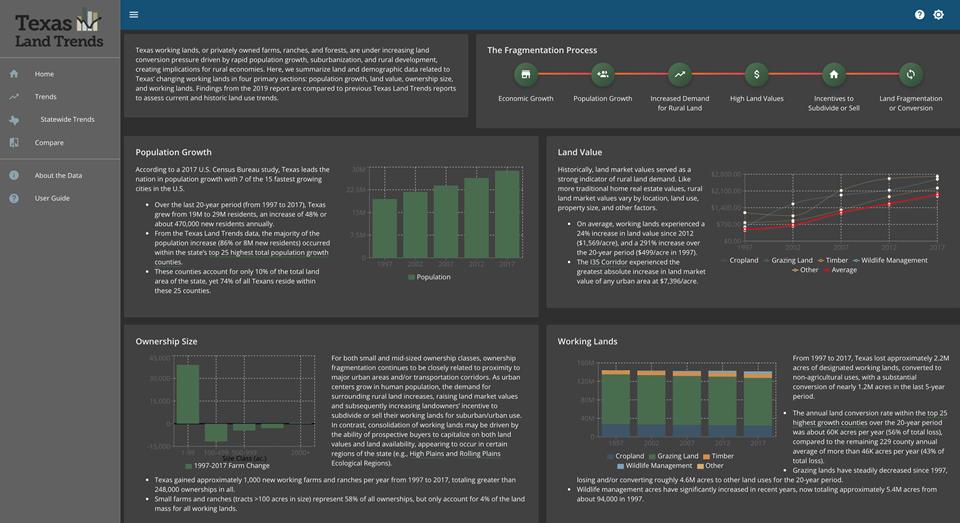In Texas, rural lands define our state’s identity. Whether it be for the agricultural products produced, natural resources and wildlife habitat maintained, or expanses of wide-open spaces left untouched for their intrinsic beauty, our state’s undeveloped acreage plays a crucial role in continuing our proud rural land legacy. Rural land-use changes often go unnoticed to the majority of the state population (over 80%), who reside in concentrated urban areas. Implications of change on rural lands, however, are far-reaching—affecting the state’s rural economies, conservation of water and other natural resources, as well as the nation’s food security and military training capabilities, to name a few.
Over the past two decades, our geospatial team has been monitoring the changes and trends occurring on privately-owned farms, ranches and forests—also known as rural working lands. Under the Texas Land Trends project, informative reports have been developed over the years to empower public and private decision-makers with the information needed to plan for the conservation of these vital working lands. The latest iteration of the Texas Land Trends report series described key findings of changes in land use, ownership size, and property market values of rural working lands alongside statewide population trends from 1997 to 2017. These metrics provide valuable insight for examining drivers of land-use change, such as motivations for land ownership consolidation and fragmentation, and its long-term impacts, like fragmentation of wildlife habitats and regional land management challenges. Read more from the Texas A&M’s Natural Resources Institute.

